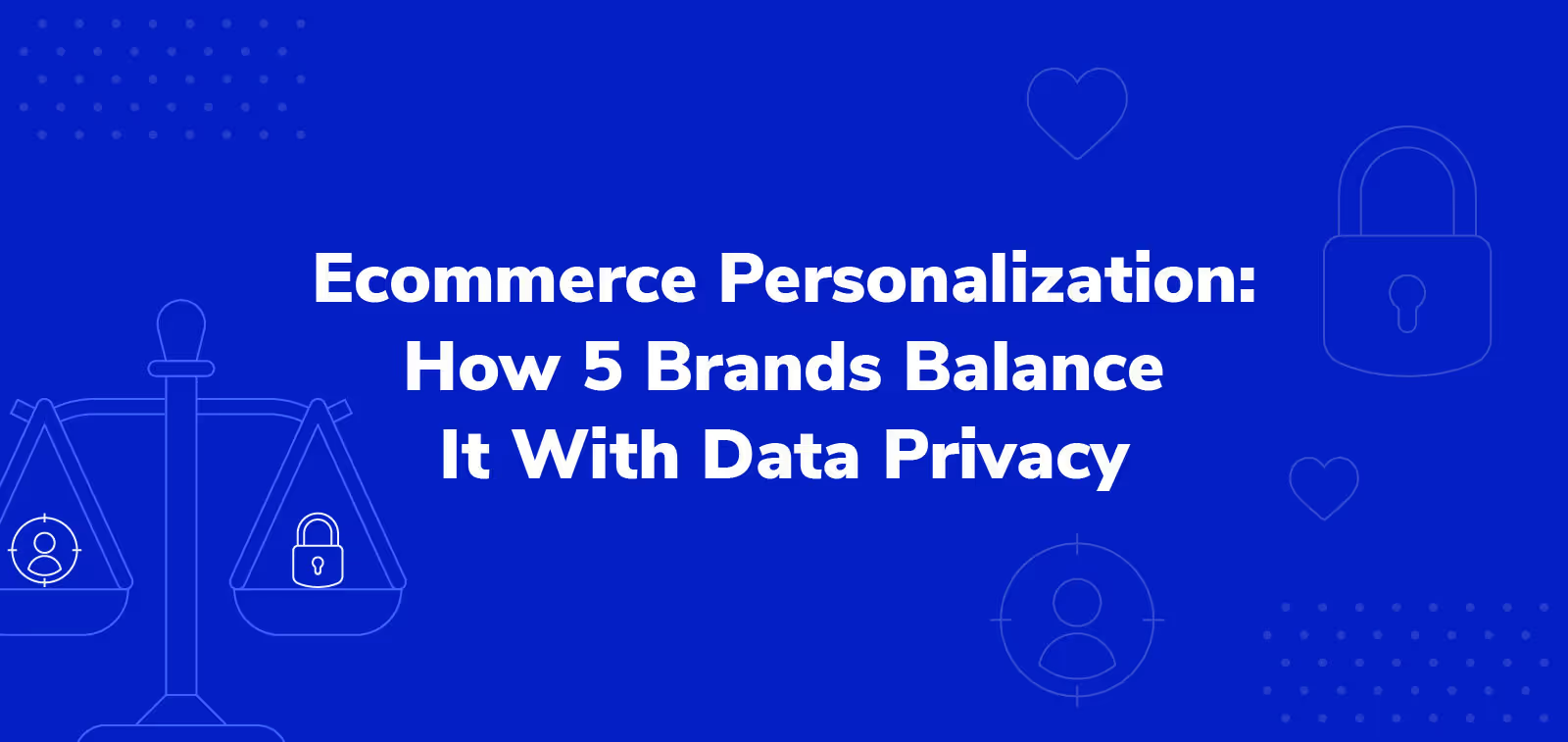Three Fitness Industry Trends + How Your Brand Can Face Them

From fitness clubs to home gyms, the fitness industry is growing and evolving rapidly, thanks mainly to Gen Z and Millennials.
It’s growing in large part because Gen Z’s fitness spending jumped 37% YoY in the first six months of 2023 compared to the same period in 2022. All other shoppers spent more on fitness, too, but that growth was a more modest 6% YoY.
Consumer behavior is also forcing the growing fitness industry’s products and services to evolve. Fitness enthusiasts who grew accustomed to home workouts during the pandemic crave a sense of community. They also want fitness programs to make room for emotional and mental health alongside physical activity.
These behaviors are shaping these three fitness industry trends. And for brands looking to scale up, it’s possible to face these new trends without breaking the bank.
Trend #1: More customers want hyper-personalized workout plans.
Personalization is table stakes in any business-to-consumer industry. Studies as recent as Twilio’s late 2023 State of Customer Engagement Report continue to show that a majority of consumers (55%) would spend more for personalization.
Twilio’s report helps explain why the job outlook for personal trainers is growing “much faster than average.” It also explains why many fitness brands are using artificial intelligence to turn personal training into hyper-personal training at scale.
Here’s what hyper-personalization looks like in practice:
“Traditional” personalization:
- Your customer downloads a fitness app.
- They enter details about their fitness journeys, including age and workout frequency.
- The app recommends a workout based on those inputs.
Hyper-personalization:
- The customer completes the workout recommended by the app.
- The app continuously adapts the original workout plan based on post-workout feedback.
- The app presents a unique workout tailored to the individual user.
Fitness app Aaptiv offers an AI feature called SmartCoach. It hyper-personalizes workouts by combining user feedback with biometric data from synced fitness trackers.

The result? If the user tells the app they feel fine after a workout, but biometric data shows an excessively elevated heart rate, the app will recommend a less-strenuous workout.
If you don’t have the budget to create an AI-powered fitness guide, the next best thing is to connect your customers with a virtual fitness trainer. For example, the Remote Coach app is available to any fitness brand looking to get their personalization efforts off the ground.

Suppose you design a portable rowing machine that customers can take with them when they travel. Use Remote Coach to link customers to a personal trainer on your staff who can design appropriate rowing workouts for their fitness levels.
Trend #2: Fitness companies are becoming more like media companies.
Getting in shape is challenging, so it’s unsurprising many fitness companies have turned to motivational and educational content to keep their customers engaged. And like media titan Netflix, much of this content is available on demand and accessible across multiple devices.
Take SoulCycle, which creates original music and playlists users can enjoy whether they’re working, exercising, or driving.
The more users engage with branded content, the thinking goes, the more they become brand loyal. And this thinking is fueling growth in the digital fitness market. Business Research Insights estimates a CAGR of 18.5% in this market from now until 2032.
The digital fitness segment is also innovating as fast as it’s growing. Here’s an example.
Virtual reality fitness
Imagine hopping on the treadmill in your living room and going for a run through the streets of Paris. Or competing with other rowing machine users to see who can row the farthest in an hour. Virtual reality fitness apps now make this possible.
The HOLOFIT app syncs with Meta Quest headsets to transport users to virtual worlds.

Using a combination of entertainment and gamification, Holofit’s developers seek to take the drudgery out of daily exercise.
Social media platforms as lifestyle content hubs
Virtual reality may be revolutionizing the fitness media landscape, but many brands are instead doubling down on reimagined social media content. And this content includes much more than video how-to guides and short workout clips (as important as these can be).
Consumers’ growing emphasis on wellness is driving this reimagination. A recent McKinsey study states 82% of United States consumers “now consider wellness a top or important priority in their everyday lives.” For McKinsey, health and wellness includes more than physical fitness:
- Health
- Sleep
- Nutrition
- Appearance
- Mindfulness
Fitness brands are responding to this trend by developing lifestyle content that takes a holistic approach to the person, in addition to the body. YouTube is an especially popular channel for it.
HubSpot surveyed 1,400 marketers for their 2024 Social Media Marketing Report and found that YouTube had the highest ROI for more than a quarter of them. As a result, 88% of surveyed marketers said they planned to “increase or maintain their investment in [YouTube] in 2024.”
A leader in this space is BODi, whose membership package includes an exercise bike, workouts, free weights, and eating plans.
BODi’s YouTube channel boasts 378,000 subscribers. The channel includes cooking demonstrations, interviews with individuals who’ve overcome health challenges, and guides to effective meditation.

Don’t worry if your videos don’t quite have the polish of BODi’s.
A growing number of consumers, especially Gen Z, would rather your content reflect a genuine commitment to issues they care about. For example, 53% of Gen Zers said they want brands they shop to support mental health, a key component of wellness.
And if video production is not in your wheelhouse, you can still create authentic content that builds customer trust and credibility. Consider fitness wearable brand Oura Ring.

Oura uses Instagram to preview stories of real customers who’ve used the ring to help deal with mental health challenges. These stories appear in easy-to-read blog posts, not in YouTube videos.
Trend #3: Wearable technology is seeing massive YoY growth.
Fitness wearable devices capture biometric data like heart rate and duration of REM sleep, which wearers use to help measure workout effectiveness and overall wellness. Fitbit and Apple Watch helped jumpstart this fitness industry segment — and it’s growing fast.
Straits Research puts the value of the 2023 global wearable fitness market at $73.34 billion. They project it “to reach $338.42 billion in 2032, growing at a CAGR of 18.52% over the forecast period (2024–2032).”
Companies like Sensoria have installed heart rate monitors in t-shirts and even sensors in socks, so athletes can monitor cadence and foot-landing style.

As more fitness wearables hit the market, a growing challenge for fitness business leaders is safeguarding them from the risks associated with everyday use.
Protecting customers — and your brand — from the unexpected
An Apple Watch or Oura Ring is no small investment for the average consumer. Accidentally spilling coffee on one or experiencing a failure after the manufacturer’s warranty expires can make a customer fear the worst:
- Will I have to purchase a new one at full price?
- Will it be a hassle to request a replacement from the customer support team?
Without product protection, the customer has few options but to purchase a new device. A manufacturer’s warranty doesn’t cover accidental breakage, even during the typical one-year coverage period. And if you don’t give the customer some sort of deal on a replacement, you risk frustrating them and potentially losing their future business.
Given the risk of accidental damage to wearable devices thanks to nonstop use, product protection is a perfect add-on at checkout.
When a customer buys a protection plan for their wearable tech, they no longer have to fear the worst when accidents happen. They can expect a quick and almost effortless claims process, and with approved claims, customers can receive a replacement device and even free shipping on the replacement.
The customer will credit the brand for making the process so seamless, which increases the likelihood that they’ll extend their membership. This process not only saves the customer relationship, but avoids the financial loss of shipping out a free replacement.
Keep customers exercising and boost profitability with product protection
Each fitness industry trend mentioned above aims to improve the customer experience of exercising and maintaining overall health.
But when a customer accidentally damages a piece of fitness equipment or wearable — or when their manufacturer warranty has expired — physical exercise and wellness routines get disrupted. Customers who can’t practice their hyper-personalized workouts may start losing their connection to your brand.
With product protection, you give the customer the power to set in motion a product replacement or repair quickly, making it easier for them to resume their routine. They’ll reward you with continued engagement and repeat purchases.
To read more about product protection’s ability to boost your profitability, click here.
Aaron Sullivan is senior content marketing manager at Extend. He specializes in writing about e-commerce, finance, entertainment, and beer.
.svg)












































.avif)











